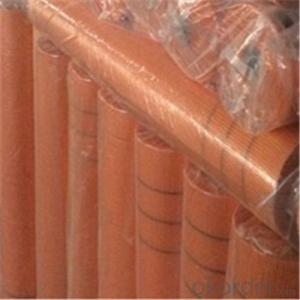Fiberglass Roving: The Unsung Hero of Composite Materials
In the world of materials science, there are superstars like carbon fiber and Kevlar, but there’s one unsung hero that quietly does its job with remarkable efficiency and versatility. That hero is fiberglass roving. This humble material is the backbone of many composite materials, yet it often goes unnoticed. Let’s dive into the world of fiberglass roving and explore its many virtues.
The Basics of Fiberglass Roving
Fiberglass roving is a bundle of continuous glass fibers that are woven together. It’s like a thick, strong thread that can be woven into various textiles or used as reinforcement in composite materials. The fibers are made from silica sand, soda ash, and limestone, which are melted and then drawn into fine strands. The result is a material that is lightweight, strong, and incredibly durable.
Why Fiberglass Roving is Awesome
1. Strength and Durability: Fiberglass roving is incredibly strong for its weight. It has a high tensile strength, which means it can withstand a lot of stress without breaking. This makes it ideal for applications where strength and durability are required.
2. Corrosion Resistance: Unlike metals, fiberglass doesn’t corrode. This property makes it perfect for marine applications, chemical storage, and any environment where corrosive substances are present.
3. Electrical Insulation: Fiberglass roving is an excellent electrical insulator, which is why it’s often used in the electrical industry for insulation purposes.
4. Thermal Insulation: It also provides good thermal insulation, making it suitable for applications where temperature control is necessary.
5. Flexibility: Fiberglass roving can be bent and shaped into various forms without losing its structural integrity. This flexibility allows for a wide range of applications.
6. Cost-Effectiveness: Compared to other reinforcing materials, fiberglass roving is relatively inexpensive, making it an attractive option for many industries.
7. Environmentally Friendly: Fiberglass is made from abundant raw materials and is recyclable, contributing to its eco-friendly nature.
Applications of Fiberglass Roving
Fiberglass roving is used in a wide array of applications, from the automotive industry to aerospace, and even in everyday household items. Here are some examples:
– Boats and Marine Vessels: Fiberglass roving is used in the construction of boats for its strength and resistance to water and corrosion.
– Wind Turbines: The lightweight and strong properties of fiberglass roving make it ideal for wind turbine blades, contributing to their efficiency and longevity.
– Automotive Parts: Many automotive parts, such as hoods and doors, are reinforced with fiberglass roving to increase their strength and durability.
– Infrastructure: Fiberglass roving is used in the reinforcement of concrete and other construction materials to improve their strength and lifespan.
– Sports Equipment: Items like golf clubs, tennis rackets, and fishing rods often incorporate fiberglass roving for its lightweight and strong properties.
– Aerospace: In the aerospace industry, fiberglass roving is used for its strength-to-weight ratio and resistance to various environmental factors.
The Manufacturing Process of Fiberglass Roving
The process of making fiberglass roving involves several steps:
1. Melt Preparation: The raw materials are melted in a furnace at high temperatures.
2. Fiber Formation: The molten mixture is then drawn into fine strands through bushings, forming the fibers.
3. Texturizing: The fibers are texturized to increase their strength and flexibility.
4. Sizing: A chemical sizing is applied to the fibers to bind them together and improve their handling properties.
5. Winding: The fibers are wound onto a spool to create the roving.
6. Quality Control: Each batch of roving is tested for quality to ensure it meets industry standards.
The Future of Fiberglass Roving
As technology advances, the uses of fiberglass roving are expanding. Researchers are exploring new ways to incorporate it into high-tech applications, such as in the development of self-healing materials and energy storage systems. The future looks bright for this unsung hero of composite materials.
Conclusion
Fiberglass roving may not always be in the spotlight, but its contributions to the world of composite materials are undeniable. From its strength and durability to its cost-effectiveness and eco-friendliness, fiberglass roving is a true workhorse. So next time you see a boat, a wind turbine, or even a piece of sports equipment, remember the humble fiberglass roving that plays a vital role in its construction. It’s time we give this material the recognition it deserves.

